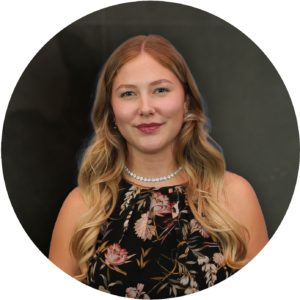TALiNT International talked with Kiy Watts, Vice President & Head of People at TOCA Football, about aligning culture and vision, future trends and her upcoming role as a judge at the TIARA Talent Acquisition Awards!
TI: As VP and Head of People at TOCA Football, what is the biggest workplace/ team challenge you’ve faced in the current economic climate?
KW: During the height of the pandemic, we faced the challenge of scarce labor especially in the service sectors. In today’s inflationary environment, we are faced with keeping up with wages, to ensure teammates feel valued and can meet their basic needs like housing and groceries. The uncertainty of the economy and witnessing the biggest names in tech reducing their workforces almost daily creates anxiety and fear. Most conversations with employees are around the stability of the organization and how to support financial and mental wellbeing.
TI: We’ve recently written a feature on hiring for culture. What do you believe comes first: Create the culture? Or hire for cultural fit?
KW: This is a great question and a great opportunity for the function of Human Resources to align with business priorities and imperatives. Culture is the practices, processes, and norms of an organization. Whether a start-up or mature organization, every organization needs a clear vision of who they want to be and where they want to go. HR should build culture around the organization’s vision. When tasked with building culture, I start with the following questions: what’s the vision for the organization? What do we want to do? Who do we want to be? Who do we serve? Does the vision include innovation, creativity, expanding access, creating opportunities, and inclusion? Do the values of the organization align with the vision, the people align with both vision and values? When it doesn’t, HR practices and systems should be evaluated to create alignment. Using hiring practices as a starting point, poke holes at how you approach how you attract and select talent. Does it align with the vision? Do your practices support hiring innovative, creative, diverse talent? If not, adjust by creating practices that respond to the vision.
TI: How do you maintain a positive and empowering culture in business?
KW: Employees need to see the alignment of their work and contribution to the purpose and vision of the organization. When our day-to-day work can be mapped back to the broader purpose and objectives of the organization, employees feel connected, but importantly empowered to perform and do their best work. At TOCA Football, we are focused on creating a culture around three performance drivers, which allow our teammates to have fun (play), have a greater sense of purpose in their work, and potential for personal and professional growth. All aligned to the employee lifecycle and key employee touch points where the objective is a positive and empowering culture.
TI: As a people strategy expert, what are the biggest obstacles facing organizations today when it comes to staff?
KW: Navigating competing priorities within the organization is often a challenge, which is where a clear vision helps. For example, marketing, product, operations, and finance all need to be rowing in the same direction. A trusted relationship with the CEO on vision, will help pull functional areas together. CHRO’s need the support of the CEO to drive the people strategy. Once full support is gained, getting all others to row in the same direction, makes creating and driving a People strategy based on business imperatives much easier.
TI: DE&I plays a huge role in business’s hiring and culture strategies. Do you find that post-pandemic gains have been made in DE&I through effective talent solutions?
KW: We saw a plethora of companies making statements and stances around DE&I following the tragic murders of George Floyd, Breonna Taylor and Ahmaud Arbery in the summer of 2020. We are seeing some companies double down on their DE&I commitments, but we are also witnessing a backtrack as layoffs are impacting DE&I teams and marginalized groups during the economic downturn.
I hope this is a moment in time for companies to reflect and reset and not abandon the progress that was made because we will have work.
I hope this is a moment in time for companies to reflect and reset and not abandon the progress that was made because we will have work.
TI: Looking to the future, what trends do you see emerging in the talent market?
- Understanding and responding to the skill gaps of Gen Z entering the workforce
- Developing leadership capabilities to manage change, multiple generations, and business dynamics while keeping people first
- Putting Diversity, Equity, and Inclusion at the front of the recruiting process not as a check in the box task.
TI: You’re a judge at this year’s TIARA Talent Solutions Awards. What innovations do you see coming out of this year’s entries?
KW: I hope to see innovation around streamlining and automating the recruitment processes, particularly creating a simplified candidate experience showcasing the employer brand. Along that same vein, innovation around leveraging actionable data which can help HR leaders make decisions around DE&I, internal skills, competencies, and mobility. I would love to hear of an entry aligning vision and culture to drive business imperatives and people strategy.
TI: What does being a judge for the TIARAs mean to you?
KW: I’m honored to be selected as a judge for the 2023 TIARA Talent Solutions Awards. Last year I had the privilege of speaking on a panel during the Talent and TIARAs Conference and was so impressed with the quality of the experience, best practices shared, and networking opportunities. To be selected as a judge this year is a great responsibility because we are ultimately validating and substantiating the approaches, trends, and best practices under consideration.












